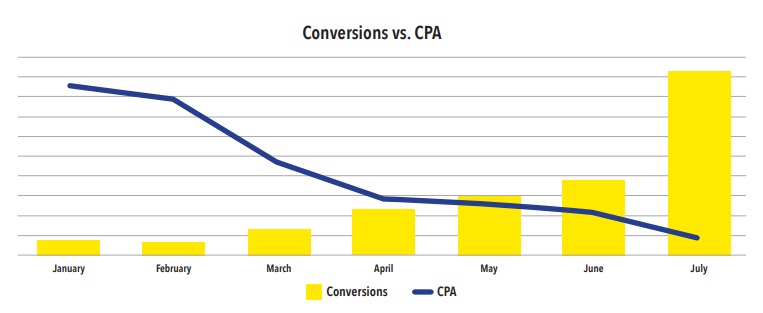Mixing Organic Viral Content with Ads for Better Cost Per Acquisition | Case Study
There are a lot of terms you need to be familiar with in online advertising. But, one of the most critical measurements you must know and understand is cost per acquisition (CPA).
Without a working understanding of CPA, you risk overpaying for your customers or paying more to acquire a customer than what they’re actually worth to your company. Calculating an effective CPA is central to any robust customer acquisition strategy and critical to the long-term sustainability of your company.
In this case study, we’ll explore how a healthcare-vertical client, with the help of 3Q Digital, were able to implement a strategy that integrated viral organic content with paid ads for major efficiency gains in cost per acquisition.
PROBLEM
The goal was to increase the number of onsite registrations from doctors and nurses while minimizing CPA as much as possible.
SOLUTION
On the brand’s Facebook page, organic content was being curated and posted frequently, including industry-relevant news articles, think pieces, blogs, etc. To grow brand authority and trust with target audiences, 3Q established paid media tests to boost organic posts using press sources that mention the client. The organic-looking content sparked significant engagement, including many “shares.” This viral activity increased reach beyond the audiences directly targeted. More importantly, measurable increases in conversion volume - on-site registrations - were immediate.
Based on the strong initial data, these organic posts were rolled out in all prospecting ad sets, in order to improve efficiency across the board.
Additionally, since many of these social posts directed to a third-party blog, not the client's website, branded paid search campaigns became very important in capturing the generated demand. When shared content mentioning the client went viral, 3Q made the following strategic changes to efficiently capture this demand:
- Changed delivery to Accelerated to ensure not missing out on any query traffic
- Opened up budget ceilings to avoid capping before the end of the day
- Strategically increased bids on keywords that were losing top Average Positions
RESULT
Through utilizing all relevant Facebook ad sets, 3Q Digital generated demand amongst a high-quality audience. Even though this traffic was not all directed to the client site, but often third parties, Facebook’s 28-day click attribution allowed the team to track subsequent on-site conversions. From June to July, when these engaging posts were added to all ad sets, this strategy led to a 144% increase in conversion volume across all paid media. For Facebook, this was 168% conversion volume growth MoM. For branded search campaigns, this was 870% growth MoM.
Additionally, because reach was expanded by organic shares and engagement, cost was kept relatively static, and CPAs fell by 60% for the same period.
